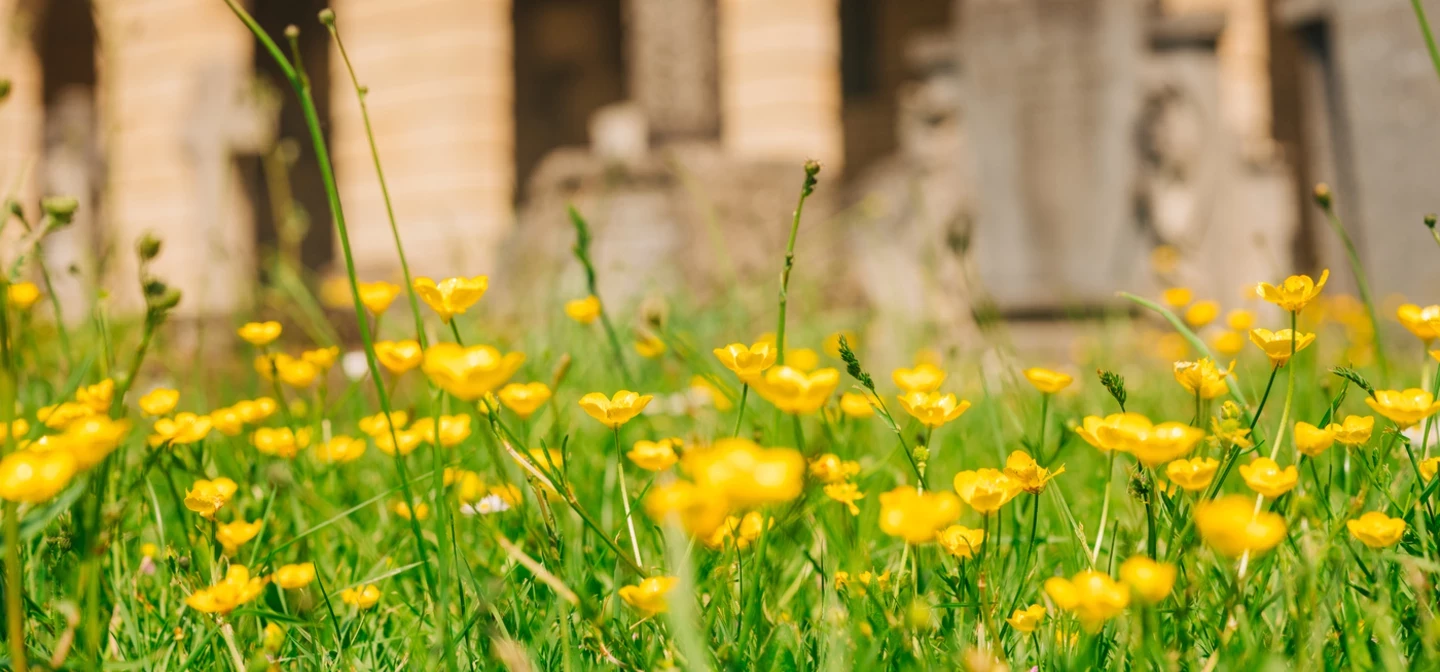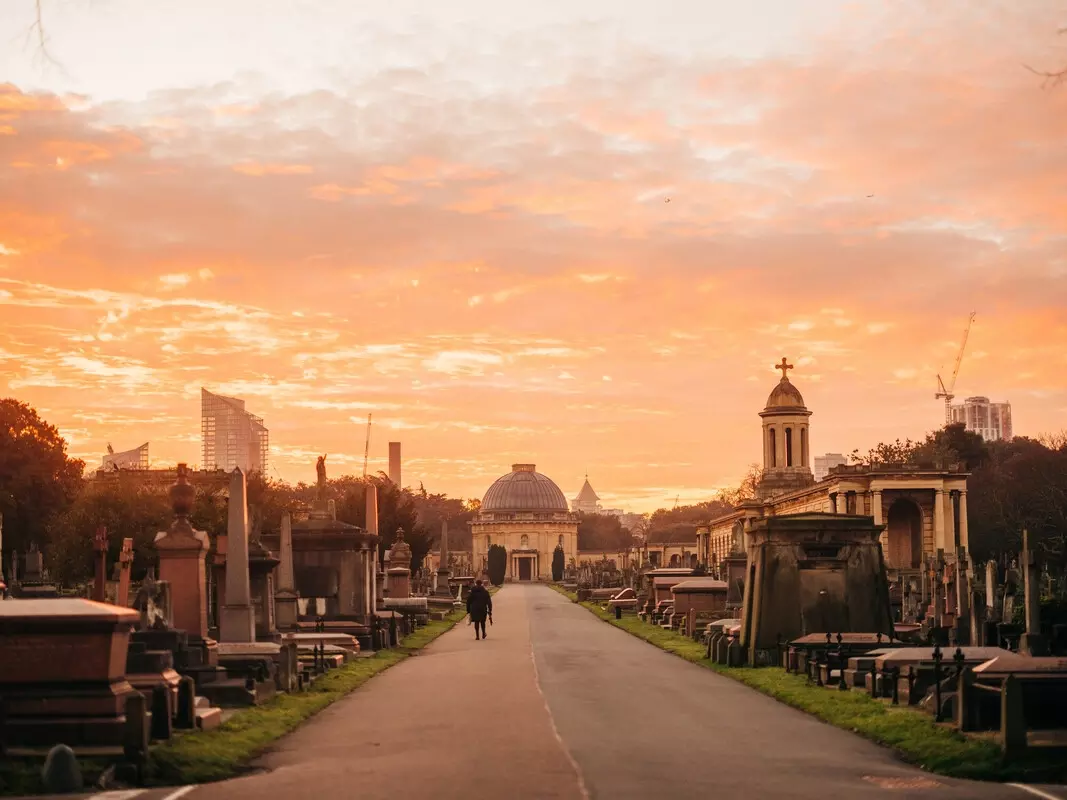
Gardens in Brompton Cemetery
Key information
Brompton Cemetery is a place where architectural symmetry is softened by nature. It’s a landscape of many hidden gems, where garden and grave intertwine.
A unique garden cemetery
Whatever time of year you’ll find something of interest. From the tree lined central avenue brimming with bulbs in spring, to flower rich meadows attracting butterflies and bees. Exotic seasonal bedding, specimen trees and shrubs adding form, flower and foliage across the year.
Designed by the architect Benjamin Baud and with planting laid out by the garden designer J.C. Loudon, Brompton Cemetery has horticultural links so strong that you just can’t ignore them.
In this beautiful cemetery lie some of the most famous botanists, plant collectors and nurserymen of the Victorian age. Robert Fortune who notoriously smuggled tea from China to India; Thomas Moore who wrote books on ferns at the height of Pteridomania who succeeded Fortune as a curator at the Chelsea Physic Garden; and nurseryman James Veitch Jnr, who provided many of the original plants for the cemetery from his Chelsea nursery nearby.
Geometry refined by ecology
The geometric plan, laid out in 1840, is all but complete, with a network of paths wide and narrow taking you through a range of landscapes and habitats shaped by geology, historic management, and now refined by the careful, ecologically led approach we take today.
At the north entrance you’ll find planting inspired by Fortune and Moore. Specimen ‘tea’ plants underplanted with ferns and other specimens popular in Victorian times to symbolise life and death, creating lush borders that pay homage to these figures on the great woodland gardens of the west.
Species largely inspired by Fortune are found at the Garden of Remembrance. Walls are covered with climbers including Wisteria, Star Jasmine and kiwi and timber pergolas create distinct garden rooms further embellished with flowering shrubs, herbaceous and ground cover plants all creating a tranquil space to reflect and admire these botanical treasures.
Fortune had an eye for the exotic, as you’ll see in the flower beds around the south entrance. Here, plantings are curated to give a more tropical display in the spirit of Veitch whose family grave lies on the elevated east wall path.

A haven for wildlife
On the west side, the cemetery opens up, with beautiful flower rich meadows, especially in early summer, where yellow rattle, ox-eye daisy, cow parsley and other wildflowers nestle amongst the long grasses creating a thriving tapestry of colour and a rich nectar source for many pollinators.
On the east the landscape is wilder with dense thickets making wonderful, undisturbed habitats for the cemetery's many birds – a fitting tribute to Eliza Phillips, animal activist and co-founder of the RSPB, who is buried here.
We want to make sure that Brompton Cemetery remains a home and a haven to wildlife.
Can I bring my dog?
Dogs are welcome at Brompton Cemetery, but please keep them on a lead at all times and stick to the signposted paths.